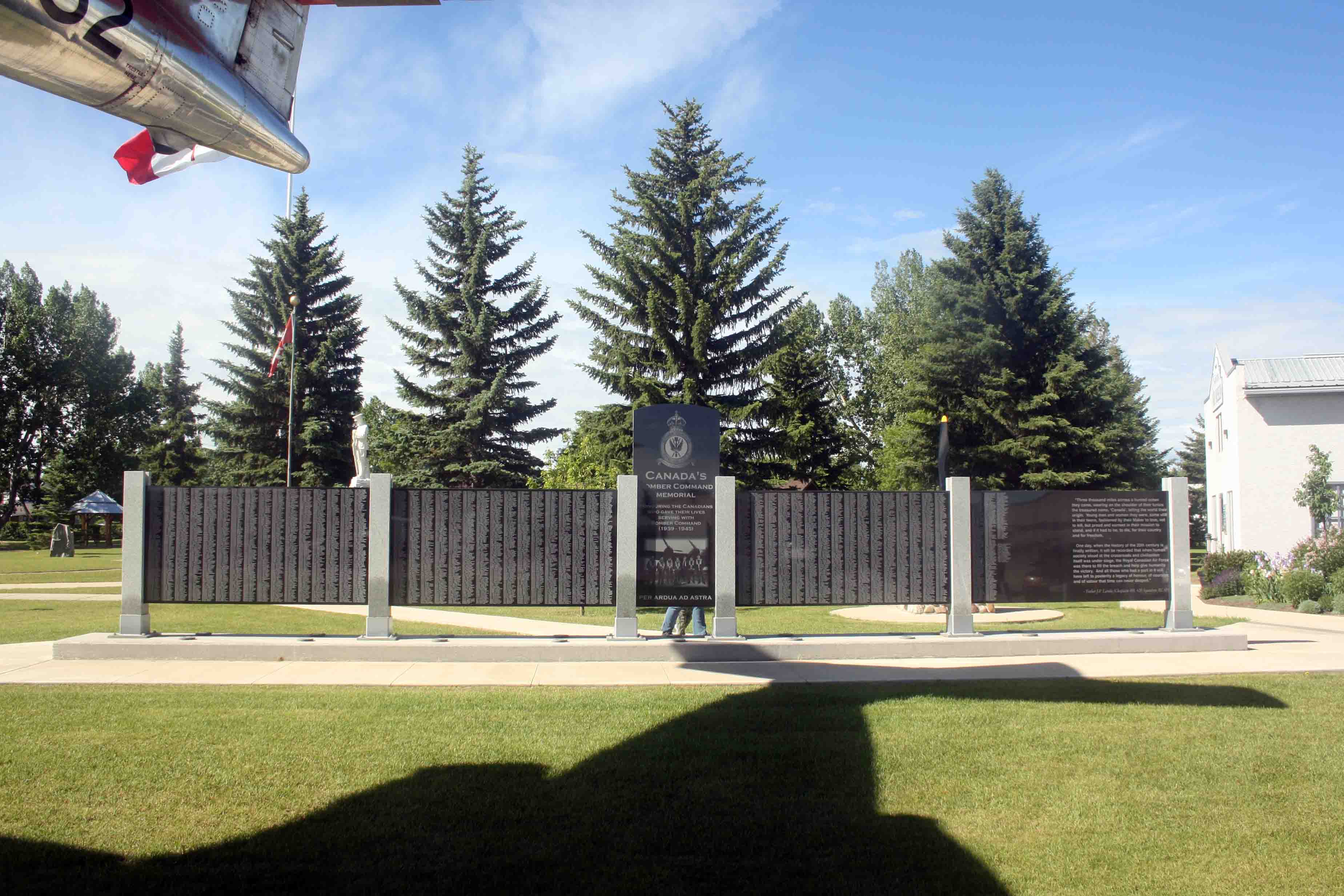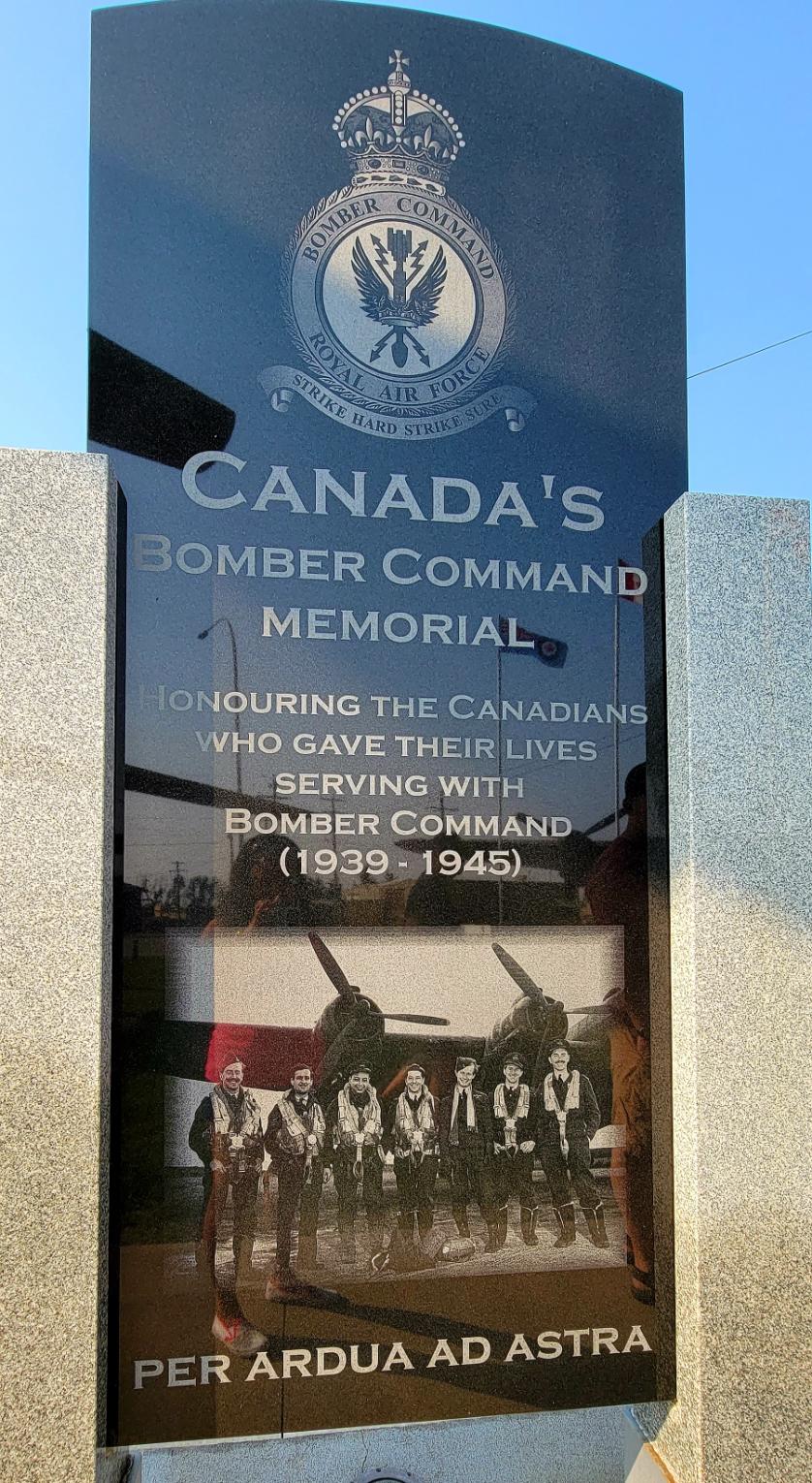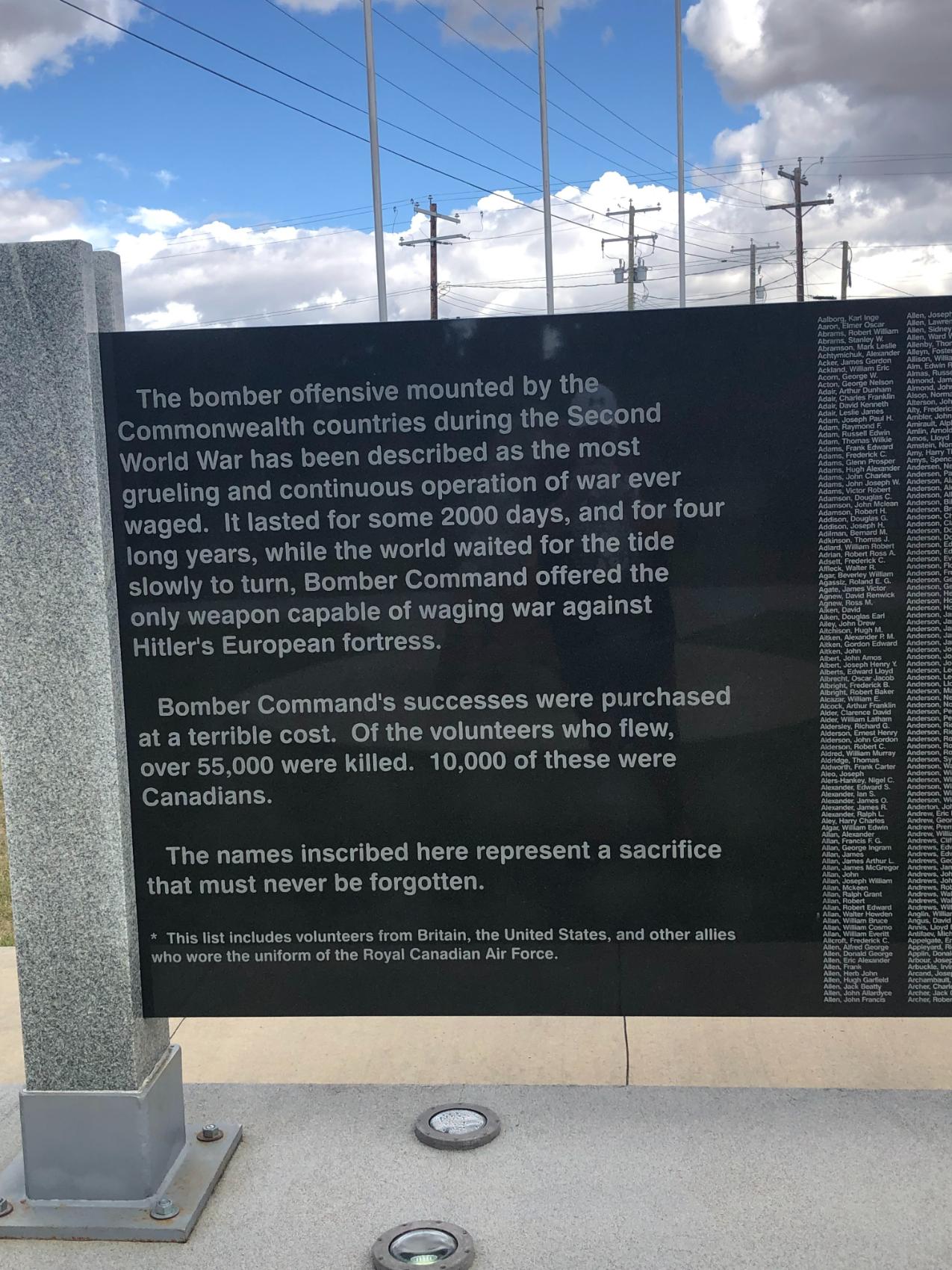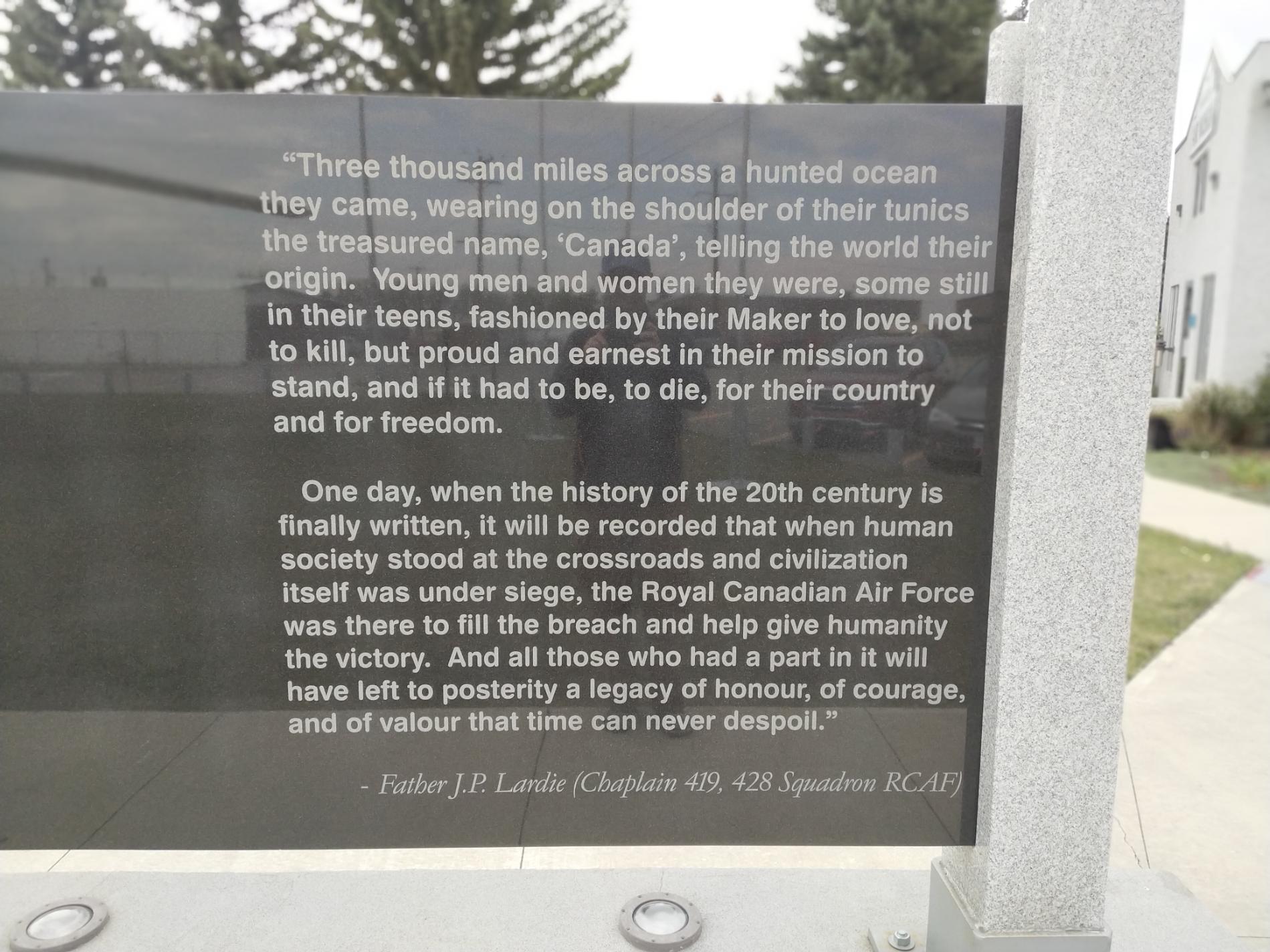Canada's Bomber Command Memorial Panels
Details:
On the side lawn of the museum.
Monument
The Bomber Command Museum (formerly the Nanton Lancaster Air Museum) built this memorial during the summer of 2005 and it was dedicated at a ceremony on August 20, 2005. The memorial is made of five panels (8′ wide and 4′ high) of 3″ thick, polished, black granite. Four of these each have about 1,600 names engraved per side. The central panel (6′ high and 3′ wide) includes the name and purpose of the memorial (on both sides) as well as the Bomber Command crest and a photo of a Canadian Bomber crew. Surrounded by a 5′ sidewalk, the total length of the memorial is 41′.
Recruiting American citizens on American soil to fight in a foreign war was a violation of the United States Neutrality Act but the RCAF needed pilots and recruits. After Pearl Harbour was attacked, everything changed. Young Americans wanted to join their own air force which was welcoming recruits, not Canada's. The Clayton Knight Committee's work was done, having been responsible for sending 900 trained aircrew and 1450 trainees to the RCAF, as well as 300 pilots to the RAF.
Other young Americans had made their way to Canada on their own and by the time the United States declared war against the Nazis in December 1941, approximately 9500 American citizens had joined the Royal Canadian Air Force, having made their own personal decision to enter the war. Of these 9500, about 800 were killed in RCAF service and of these 449 have their names inscribed on Canada's Bomber Command Memorial Wall.
The memorial is engraved with 10, 673 names of those who were killed while serving the Canadian Bomber Command during World War II. The following are the names of the 449 Americans, almost all wearing the uniform of the Royal Canadian Air Force. The designation 'RCAF - USAAF' indicates that these RCAF Americans transferred over to the USAAF in late 1942 - 1944. These airmen transferred while they were flying with their RCAF and RAF squadrons and were only partway through their combat tour. They were told to return to their RAF-RCAF squadrons and finish that tour. Sadly, they were killed before doing so.
Source of information: www.bombercommandmuseumarchives.ca
Monument Text:
Center panel:
CANADA’S
BOMBER COMMAND
MEMORIAL
HONOURING THE CANADIANS
WHO GAVE THEIR LIVES
SERVING WITH
BOMBER COMMAND (1939 – 1945)
PER ARDUA AD ASTRA
Panel 1:
The bomber offensive mounted by the Commonwealth countries during the Second World War has been described as the most grueling and continuous operation of war ever waged. It lasted for some 2000 days, and for four long years, while the world waited for the tide to slowly turn, Bomber Command offered the only weapon capable of waging war against Hitler’s European fortress.
Bomber Command’s successes were purchased at a terrible cost. Of the volunteers who flew, over 55,000 were killed. 10,000 of these were Canadians.
The names inscribed here represent a sacrifice that must never be forgotten.
* This list includes volunteers from Britain, the United States, and other allies who wore the uniform of the Royal Canadian Air Force.
Panel 2:
“Three thousand miles across a hunted ocean they came, wearing on the shoulder of their tunics the treasured name ‘Canada’, telling the world their origin. Young men and women they were, some still in their teens, fashioned by their Maker to love, not to kill, but proud and earnest in their mission to stand, and if it had to be, to die, for their country and for freedom.
One day, when the history of the 20th century is finally written, it will be recorded that when human society stood at the crossroads and civilization was itself under siege, the Royal Canadian Air Force was there to fill the breach and help give humanity the victory. And all those who had a part in it will have left to posterity a legacy of honour, of courage, and of valour that time can never despoil.”
- Father J.P. Lardie (Chaplain 419, 428 Squadron RCAF)
Commemorates:
People:
William Arthur 'Bill' Bartlemay
Cuthbert Worcester Graham Burke
Units:
Royal Canadian Air Force
Wars:
WWII
Other images :




